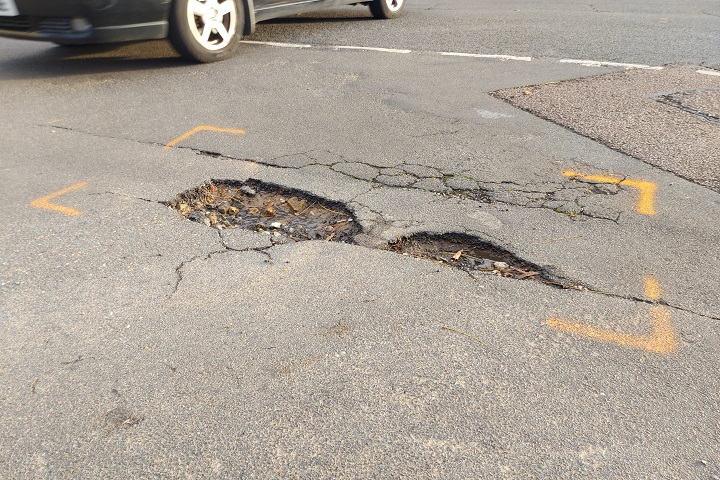
More than half of the local road network in England and Wales is reported to have less than 15 years’ structural life left as the amount needed to fix the backlog of carriageway repairs increases to a record high of £16.3 billion.
That’s according to the Annual Local Authority Road Maintenance (ALARM) survey report, published today (19 March 2024) by the Asphalt Industry Alliance (AIA).
Now in its 29th year, the ALARM report is widely respected as the most authoritative and comprehensive study into local road maintenance funding and condition.
The report highlights the scale of the challenge facing local authority highway teams who have a statutory responsibility to keep local roads safe, but don’t have the funds to do so.
AIA says poor road conditions impact on people’s everyday lives, from the cost and inconvenience of damage to vehicles, to potentially causing accidents and injury to vulnerable road users such as cyclists – some of which have proven fatal.
Despite local authority highway teams reporting an overall increase in carriageway maintenance budgets, they have been hit by the impact of rising costs due to inflation, meaning they have been able to do less. This has been compounded by the increasing frequency of extreme weather events, which together are accelerating the rate at which the network is deteriorating.
ALARM data shows that only 47% of roads in England and Wales are classed as being in good structural condition, with the remaining 53% – more than 107,000 miles – now having less than 15 years’ structural life remaining. And, surface conditions are also reported to have declined, despite a 40% increase in the number of potholes filled over the last 12 months adding to the existing patchwork of previous repairs.
The findings, which relate to the 2023/24 financial year, show that in England and Wales:
- Local authorities would have needed an additional £1.22 billion (an average of £7.2 million per authority) just to reach their own target road conditions.
- It would now cost £16.3 billion to tackle the backlog of carriageway repairs and bring the network up to a standard from which it can be maintained efficiently and cost-effectively going forward.
- Less than half (47%) of all local roads are reported to be in good structural condition meaning the remaining 107,000 miles (53%) could continue to deteriorate to the point of needing to be rebuilt within the next 15 years without appropriate maintenance measures taking place.
- £143.5 million has been spent filling in 2 million potholes over the last 12 months.
- Roads are only resurfaced on average once every 80 years.
Rick Green, chair of the Asphalt Industry Alliance, said: “It’s clear that there is still a mountain to climb when it comes to improving the condition of our local roads, which are a key asset on which we all rely, every day.
“The Government has recognised that fixing our roads is about more than filling in potholes with its announcement of the additional Network North funding in England.
“But, while the transport secretary stated that this additional £8.3 billion over 11 years is enough to resurface 5,000 miles of local roads, this equates to just 2.5% of the network – or less than 0.25% per year.“Unfortunately, it will do little to address the scale of the issue with ALARM findings reporting that 11% of local roads are already in poor condition and likely to require maintenance in the next 12 months alone.
“That said, English authorities would be in an even worse position without this additional funding, so we sincerely hope that this promise is delivered on and that the Welsh Government honours its commitments to prioritising highway maintenance.
“We need to reach the point where local authority highway engineers are able to plan and proactively carry out maintenance work in the most timely and efficient way to the greatest benefit of all road users – rather than just having enough money to address immediate and urgent repairs.”
The full ALARM survey report is available to download by visiting www. asphaltuk.org.
Comment on this story